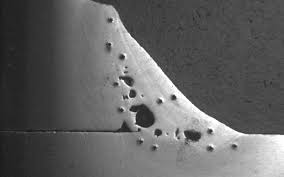Recognizing Porosity in Welding: Checking Out Causes, Results, and Prevention Techniques
As specialists in the welding market are well mindful, comprehending the causes, results, and avoidance methods related to porosity is essential for achieving durable and reputable welds. By delving into the root triggers of porosity, examining its detrimental impacts on weld quality, and discovering effective prevention techniques, welders can boost their understanding and skills to create top quality welds constantly.
Usual Causes of Porosity
Porosity in welding is mostly caused by a combination of elements such as contamination, improper shielding, and insufficient gas insurance coverage during the welding procedure. Contamination, in the type of dirt, grease, or rust on the welding surface area, produces gas pockets when warmed, leading to porosity in the weld. Incorrect protecting occurs when the protecting gas, commonly utilized in procedures like MIG and TIG welding, is incapable to completely safeguard the molten weld swimming pool from responding with the surrounding air, resulting in gas entrapment and succeeding porosity. Additionally, inadequate gas insurance coverage, frequently as a result of wrong circulation rates or nozzle positioning, can leave components of the weld unguarded, allowing porosity to create. These elements collectively add to the formation of spaces within the weld, compromising its honesty and potentially causing structural concerns. Understanding and addressing these typical causes are crucial steps in stopping porosity and guaranteeing the top quality and stamina of bonded joints.
Results on Weld Quality
The existence of porosity in a weld can considerably endanger the overall quality and honesty of the welded joint. Porosity within a weld produces gaps or tooth cavities that deteriorate the framework, making it extra susceptible to splitting, corrosion, and mechanical failing. These spaces act as stress concentrators, decreasing the load-bearing ability of the weld and boosting the probability of early failing under applied anxiety. On top of that, porosity can likewise work as prospective websites for hydrogen entrapment, additional worsening the destruction of the weld's mechanical residential or commercial properties.
Furthermore, porosity can prevent the effectiveness of non-destructive screening (NDT) methods, making it testing to spot other defects or suspensions within the weld. This can lead to substantial security problems, specifically in essential applications where the structural integrity of the welded elements is extremely important.

Prevention Techniques Review
Given the harmful effect of porosity on weld top quality, reliable avoidance strategies are crucial to maintaining the structural integrity of welded joints. Additionally, selecting the appropriate welding parameters, such as voltage, existing, and take a trip rate, can aid reduce the risk of porosity development. By integrating these prevention methods into welding practices, the incident of porosity can be considerably minimized, leading to more powerful and much more trusted welded joints.
Importance of Proper Shielding
Proper shielding in welding plays a vital duty in preventing atmospheric contamination and guaranteeing the stability of welded joints. Shielding gases, such as argon, helium, or a mix of both, are typically used to shield the weld pool from responding with aspects in the air like oxygen and nitrogen. When these responsive components come into call with the hot weld pool, they can create porosity, causing weak welds with minimized mechanical residential properties.

Inadequate shielding can cause various issues like porosity, spatter, and oxidation, endangering the structural integrity of the bonded joint. Adhering to correct shielding methods is important to produce premium welds with marginal flaws and ensure the longevity and dependability of the bonded components.
Monitoring and Control Techniques
Just how can welders efficiently keep an eye on and regulate the welding procedure to ensure optimal results and protect against defects like porosity? One key approach is with using advanced monitoring modern technologies. These can include real-time surveillance systems that provide feedback on parameters such as voltage, current, click to investigate take a trip speed, and gas flow prices. By constantly checking these variables, welders can recognize inconsistencies from the suitable problems and make prompt changes to stop porosity formation.

Additionally, executing correct training programs for welders is vital for monitoring and managing the welding procedure properly. What is Porosity. Enlightening welders on the value of maintaining consistent parameters, such as correct gas protecting and take a trip speed, can assist protect against porosity concerns. Regular evaluations and qualifications can likewise make certain that welders are efficient in monitoring and managing welding processes
Additionally, using automated welding systems can boost monitoring and control capacities. These systems can exactly manage welding explanation parameters, decreasing the possibility of human error and making certain constant weld quality. By integrating sophisticated tracking innovations, training programs, and automated systems, welders can effectively check and manage the welding process to lessen porosity problems and attain top quality welds.
Conclusion
